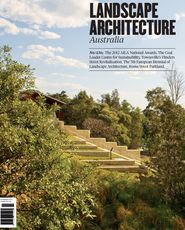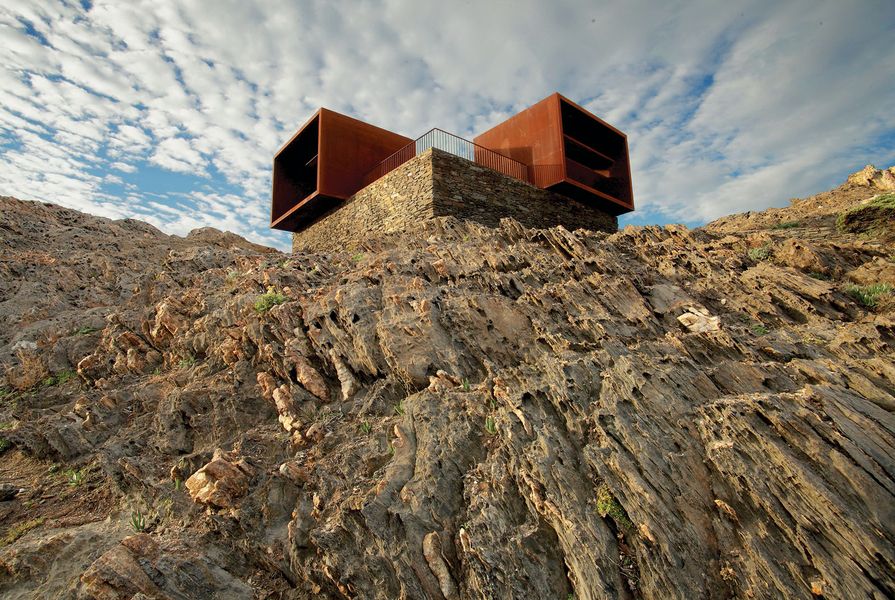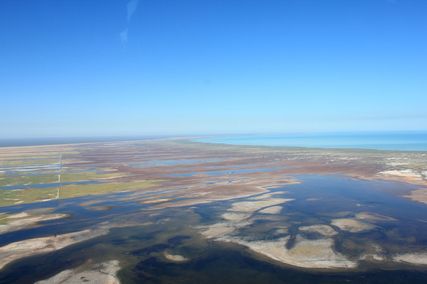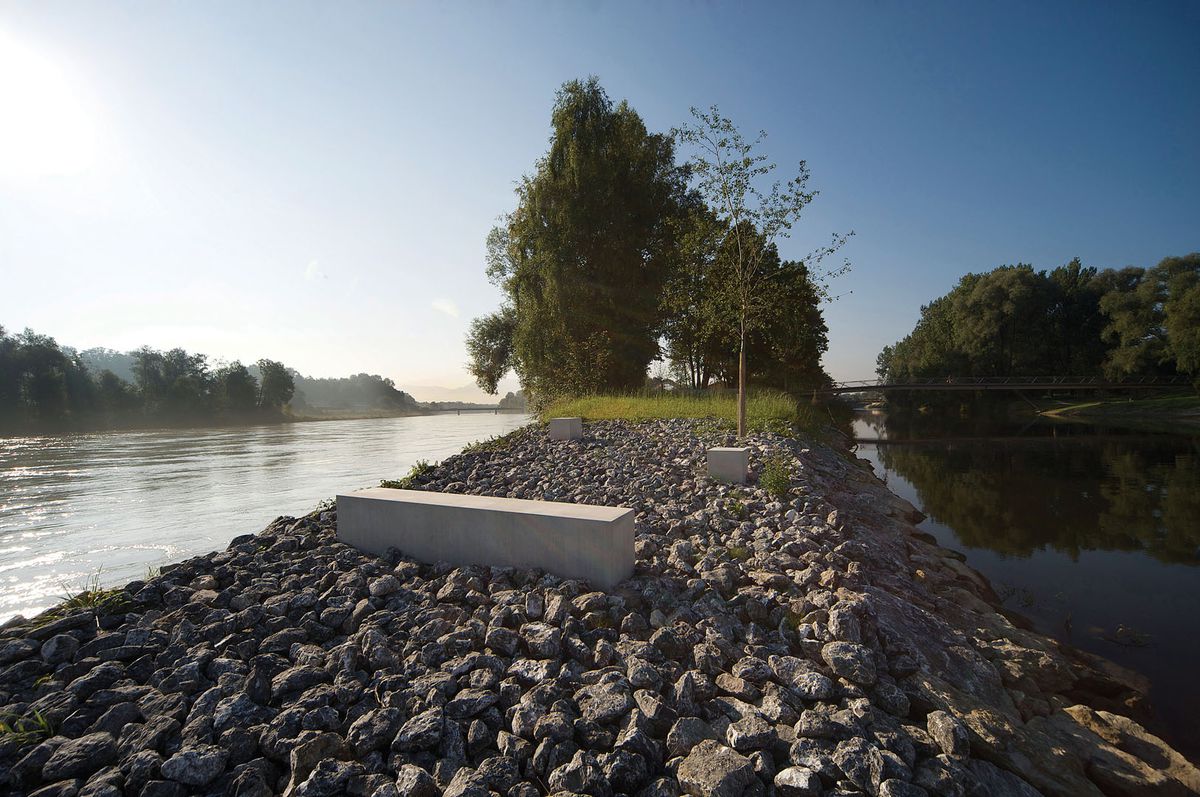Since its inception in 1999, the European Biennial of Landscape Architecture in Barcelona has become an important event on the calendar for the profession, with the Rosa Barba Landscape Award considered one of the most prestigious awards in the industry.
The seventh Biennial, held from September 27 to 29 this year, “aimed to be a catalyst of ideas, a driver for illusions and changes in the field of landscape.” It is an enormous credit to the organizers that the event took place during what is a precarious time for the region, which is experiencing daily news of record unemployment and austerity measures. The economic situation in Europe was ever-present at the Biennial, and frequent references to low budgets and long-term processes for future projects were made – conditions that are hardly new to any landscape architect.
Cabins and gardens Tudela-Culip in the Natural Park of Cap de Creus, Spain, in 2008.
Image: Marti Franch
“Innovation and crisis” became the catchphrases of the symposium. But as few innovations were presented, the crisis experienced by the profession became more obvious. Discussion revolved around the recognition and regulatory processes needed to protect the profession, as well as the necessity to promote the work of landscape architects. Images were evoked of the landscape architect being bullied from the playground by architects and engineers and ignored by decision makers. The balancing act between a clear definition of the profession and the value of being one of the few remaining generalist professions was highlighted by Jörg Sieweke, assistant professor at the University of Virginia’s School of Architecture. In his view, landscape architects risk being pigeonholed as defenders of green. By putting the emphasis on measurable performances and functions of landscape, the profession moves towards a mostly quantitative approach. To counter this, a holistic expertise is required, as design needs to be “undisciplined.”
Most speakers seemed to concentrate on how to defend what is perceived as the landscape architecture domain, rather than venture into new realms and blur the lines of disciplines. Some of the projects and design methods presented were exceptional, others less noteworthy, but few gave new impulses. Refreshingly, Julie Bargmann, founder of DIRT Studio, provided some self-criticism and urged the profession to pioneer into the area of infrastructure and move outside the usual occupation of landscape architecture. Sebastien Penfornis of Taktyk represented a new and exciting generation of practitioners, merging practice and research. Taktyk’s focus on investigation and research within its projects and on its body of work became obvious in the playful design methods, improvisations and new strategies of community consultation that were presented. The directors of Taktyk are currently undertaking a PhD (Research by Design) at RMIT University, which was awarded the International Prize for Landscape Schools at the Biennial.
Mangfallpark in Rosenheim, Germany, by A24 Landschaft.
Image: Hanns Joosten
Other interesting strategies presented were crossovers of education, research and practice, but the decision to arrange two separate round tables – one for innovation in education and one for professional practice – was unfortunate. A real discussion did not eventuate as participants were asked to give short presentations. The impression grew that the Biennial, aptly titled “Biennial Versus Biennial,” seemed to struggle with its own ambitions to undertake a critical review of current objectives of the discipline and stimulate a discussion about the future of landscape architecture. This resulted in an overfilled schedule that left too little space for debate and interaction with the audience.
The seven finalists considered for the Rosa Barba Landscape Award, selected from 350 entries, were projects that included landscape parks, gardens and restoration works. Surprisingly, no genuine urban project was found among them. The winner of the award, the widely published restoration project of Tudela-Culip by Martí Franch (EMF Landscape Architecture) and Ton Ardèvol, in the natural park of Cap de Creus in Girona, Spain, is the astonishing result of an open process to turn a deconstruction into a construction. The beauty of the coast of Cap de Creus in Catalonia and the magical shapes of the rocky landscape served Salvador Dali as inspiration for his paintings. But in the 1960s the private holiday resort Club Med was constructed on the eastern tip of the coast. Forty years later the government acquired the properties to reinstate the natural landscape. The project included the removal of large areas of exotic vegetation, the deconstruction of over four hundred buildings and the recycling of close to 100 percent of the resulting waste, as well as the rehabilitation of the native vegetation and natural topography. A process of creative restoration has allowed the landscape to now be experienced through an orchestrated network of pathways, boardwalks and lookout points over the traces of previous structures. The outcome is a design that celebrates the splendour of its surrounding landscape without trying to compete with it. It is a restrained and subtle design intervention that skilfully plays with the natural and cultural histories of the site, including its recent past as Club Med. In the light of changes to the coastal legislation, with the consequence of more development along the coastline, the Cap de Creus project sets an example for the returning of the coast back to the community.
Mangfallpark in Rosenheim, Germany, by A24 Landschaft.
Image: Hanns Joosten
The designers of another finalist project, the Mangfallpark Rosenheim in the alpine region of Bavaria, Germany, also opted to draw attention to the magnificence of the existing landscape rather than create a large-scale landscape design. A24 Landschaft inserted a single object that serves as a bridge, path, resting spot and lookout point to facilitate access to the river and its banks by the people of nearby Rosenheim.
Another project that highlights the natural scenery with carefully designed small-scale structures is the National Tourist Routes in Norway, which received a Topos Jubilee Award. The second Topos Jubilee Award winner brought the audience back to the harsh realities of urban settlements. Christina Kaba, co-director of Abalimi Bezekhaya in South Africa, was the most inspiring speaker at the Biennial. Abalimi Bezekhaya is a self-sustainable community micro-farming movement in the townships around Cape Town that provides fresh food security and regular income to around three thousand micro-farming families. Kaba, who came from a poor background with no formal education, started the organization with nothing but her determination. Leaving all debates about a profession in crisis and the need for innovation behind, she demonstrated to the audience that you just have to go out there and do it.
At the closure of the symposium many of the questions that had been raised were left unanswered. However, the heated discussions at the Biennial proved the invaluable importance of the event. The European Biennial of Landscape Architecture will be re-launched as an international symposium in 2014 and it will be very interesting to see its transformation.
Source

Report
Published online: 1 Nov 2012
Words:
Sigrid Ehrmann
Images:
Hanns Joosten,
Marti Franch,
Ton Ardèvol
Issue
Landscape Architecture Australia, November 2012























